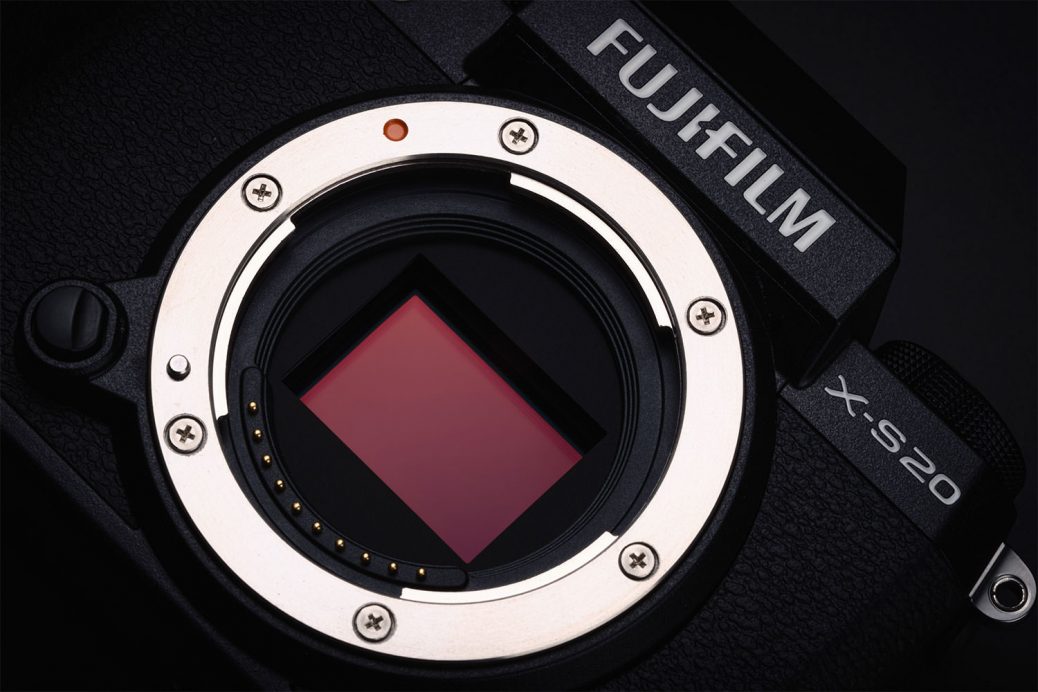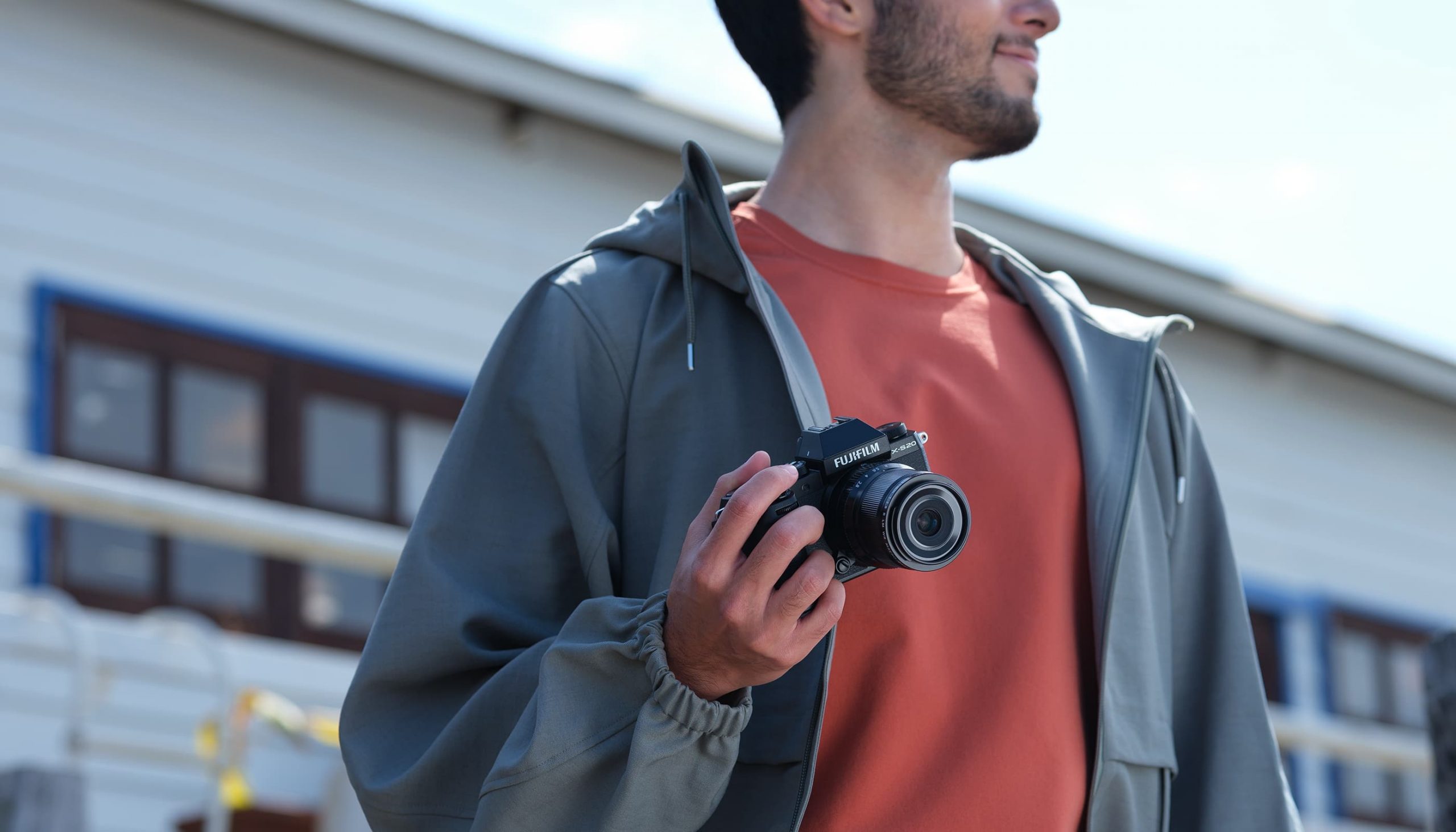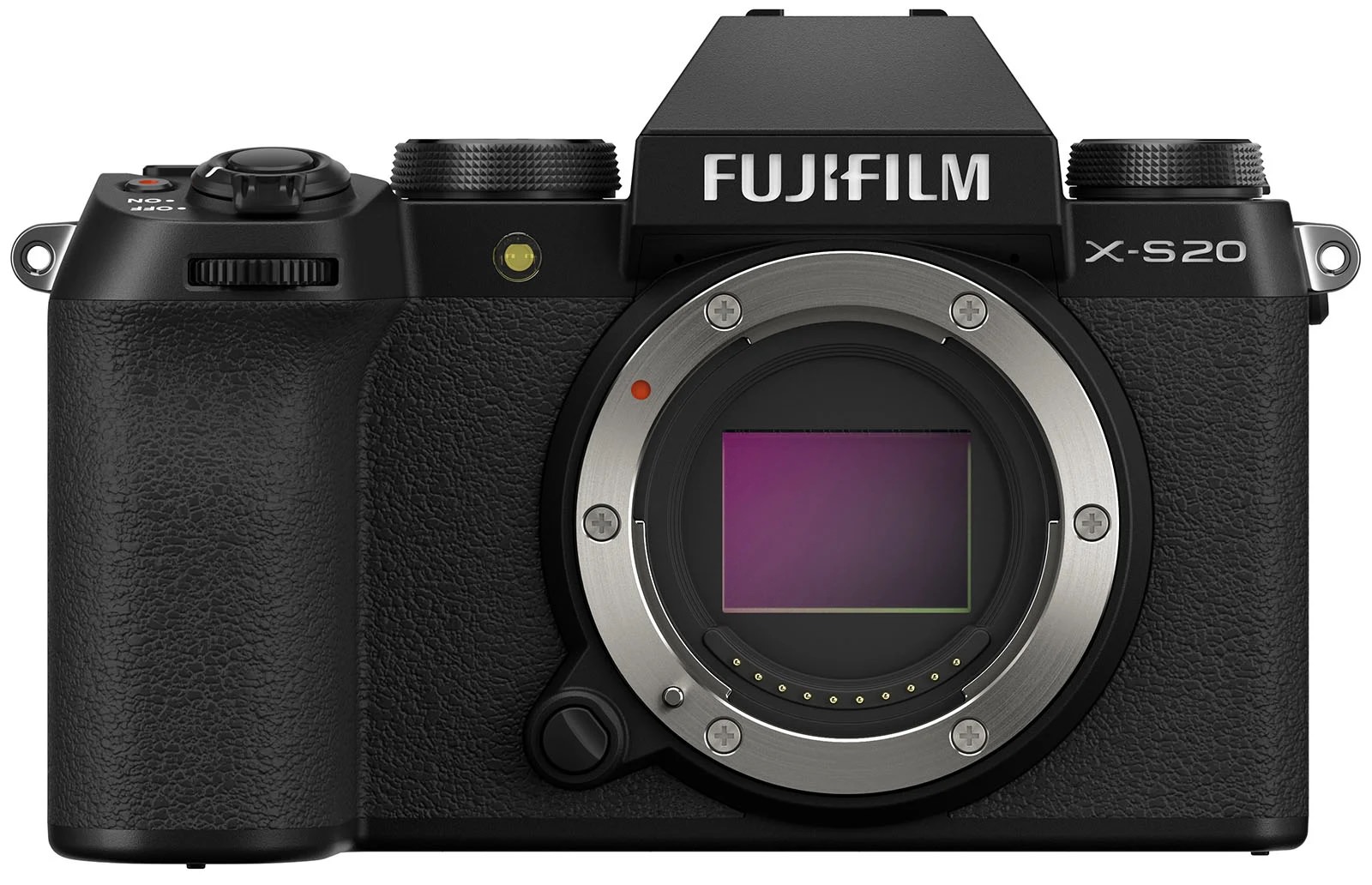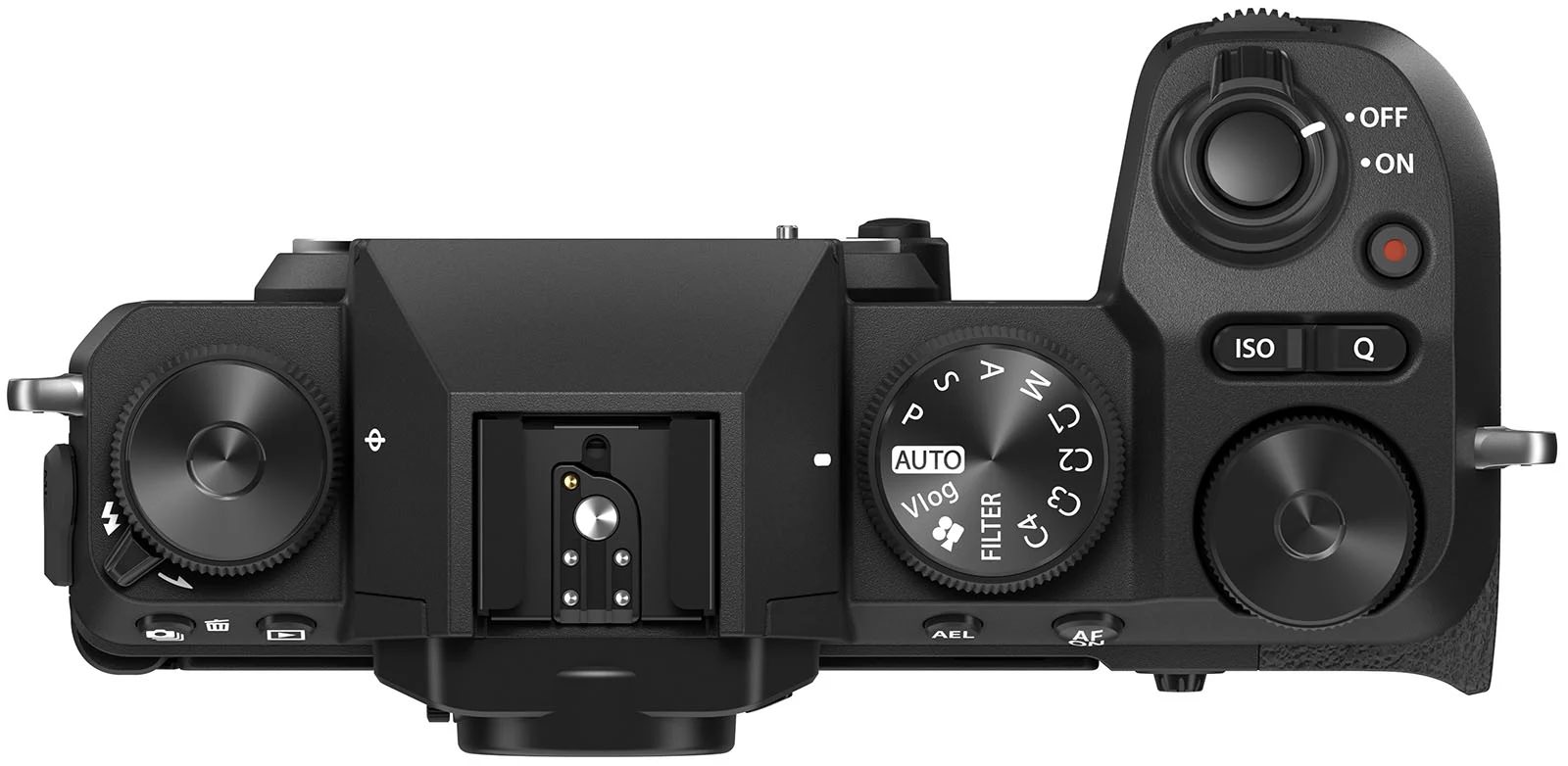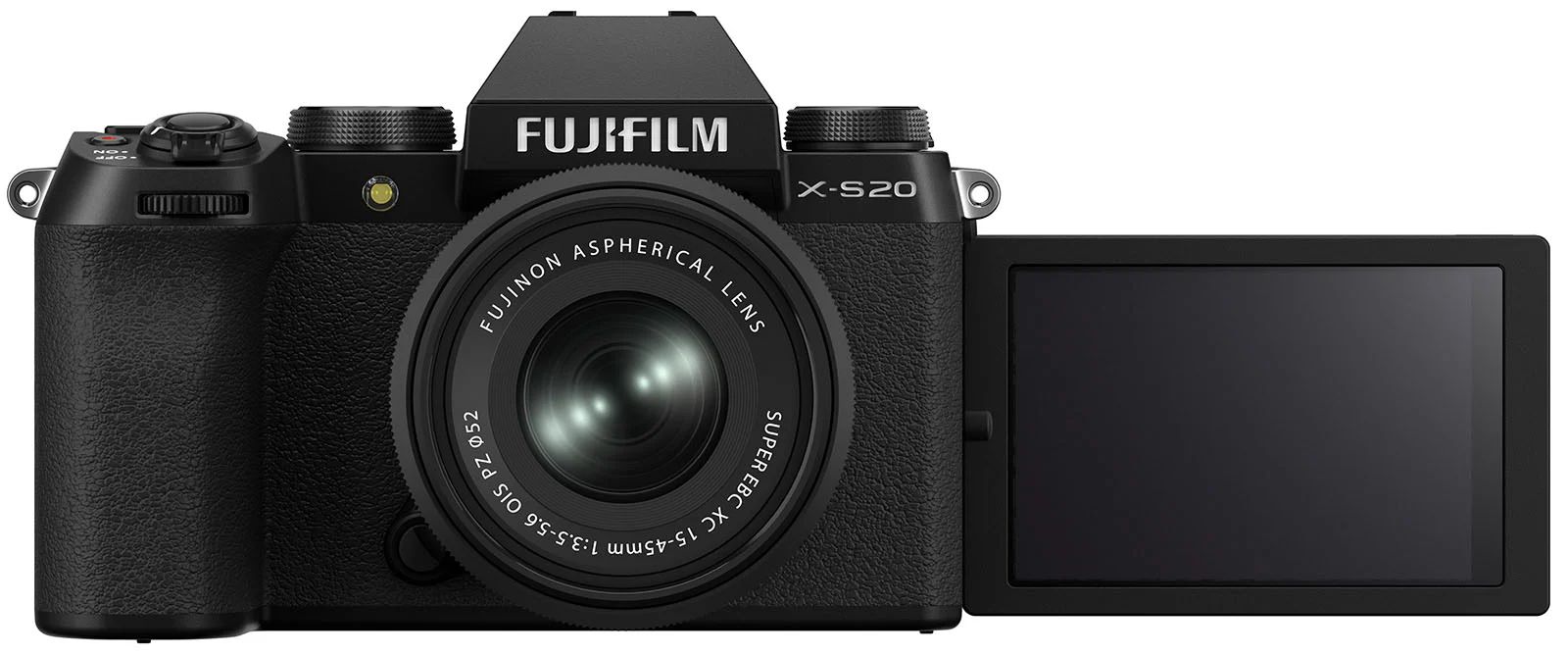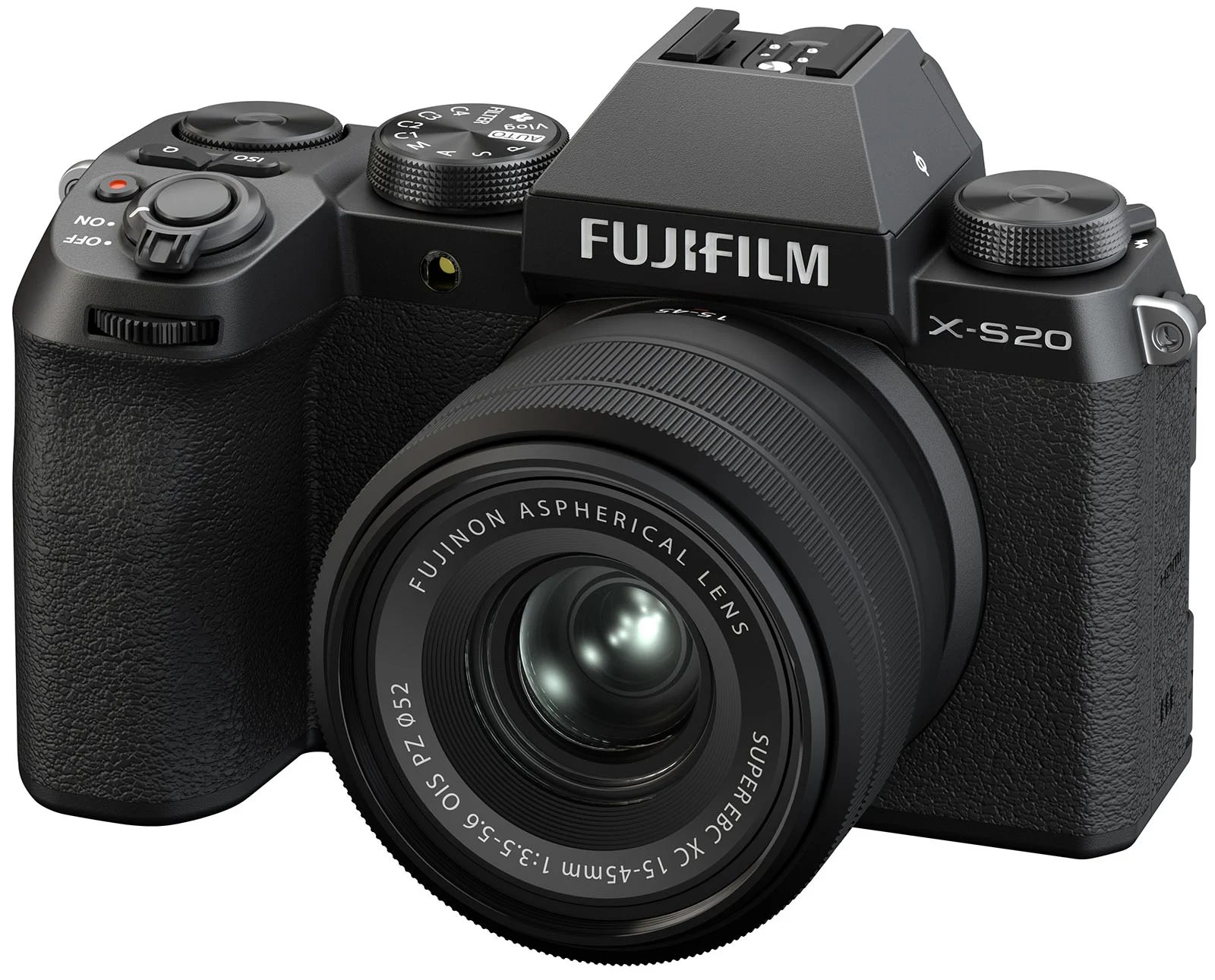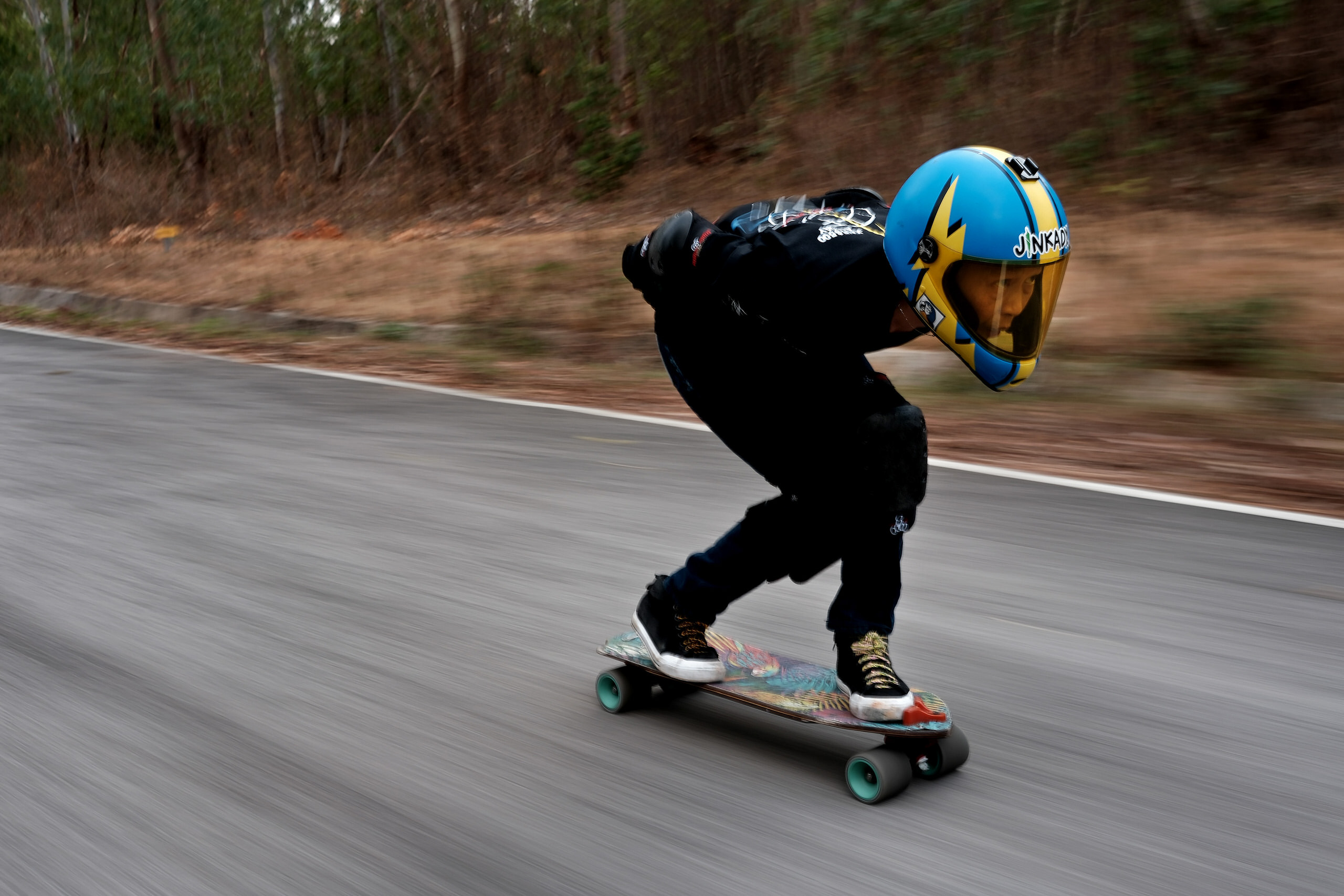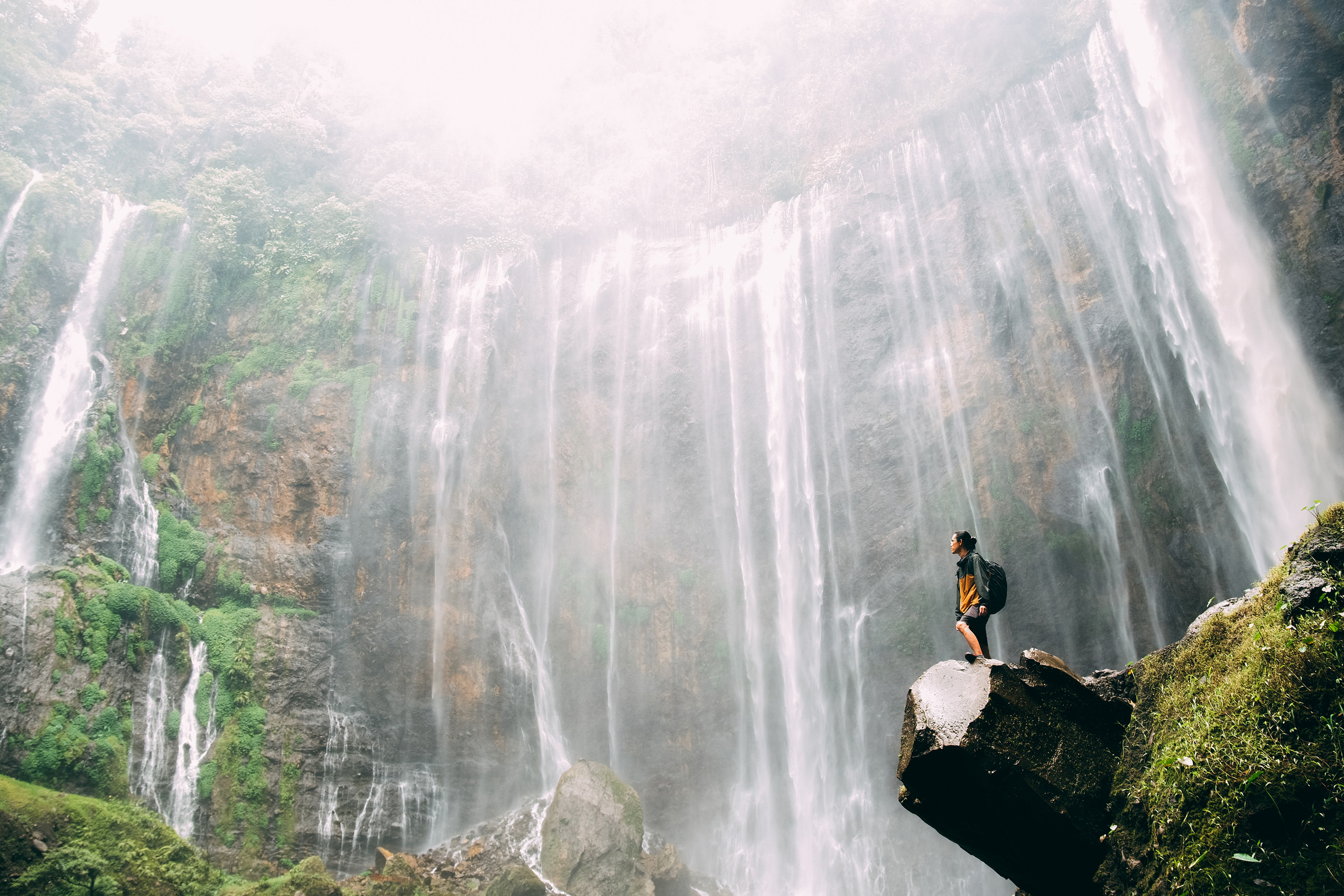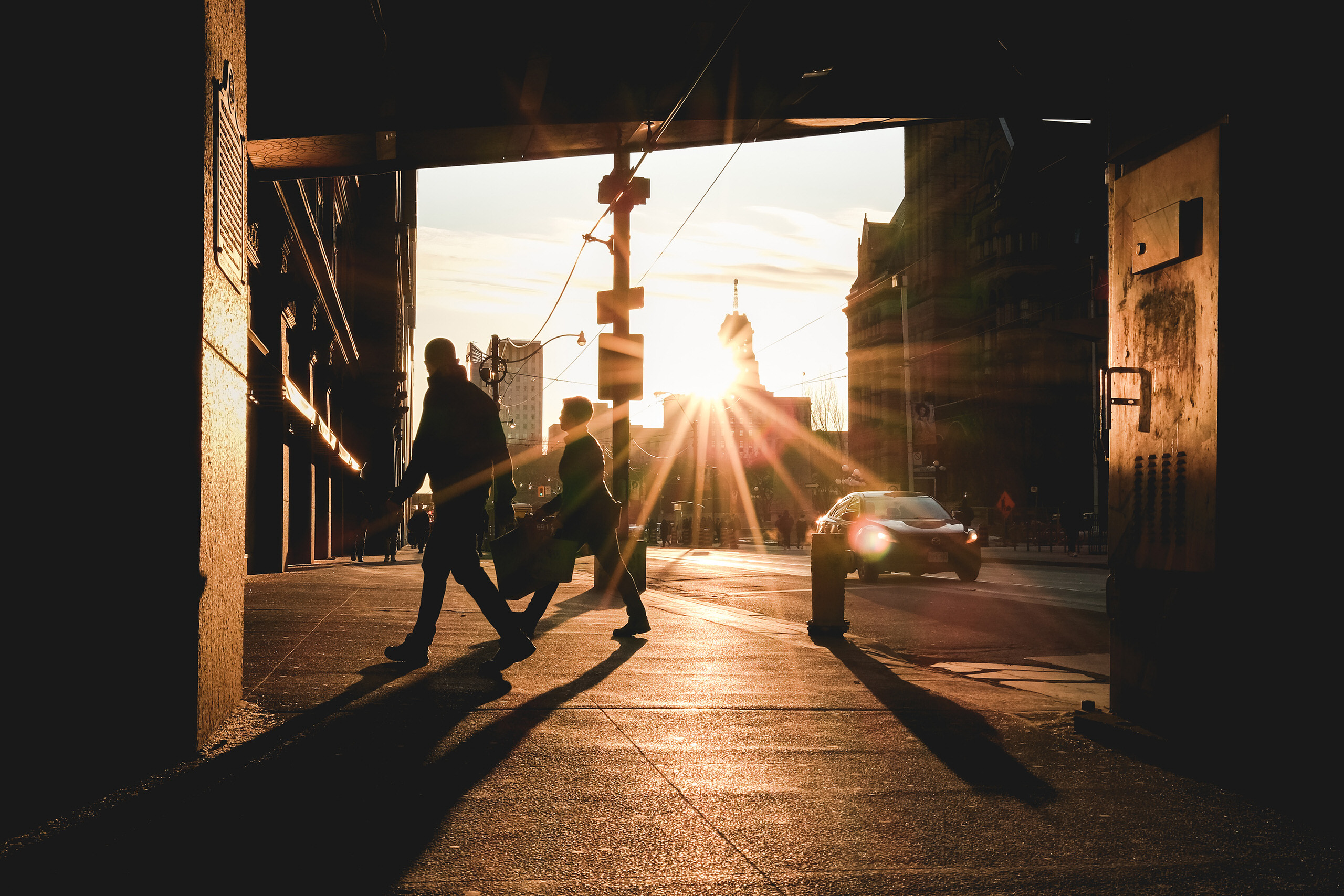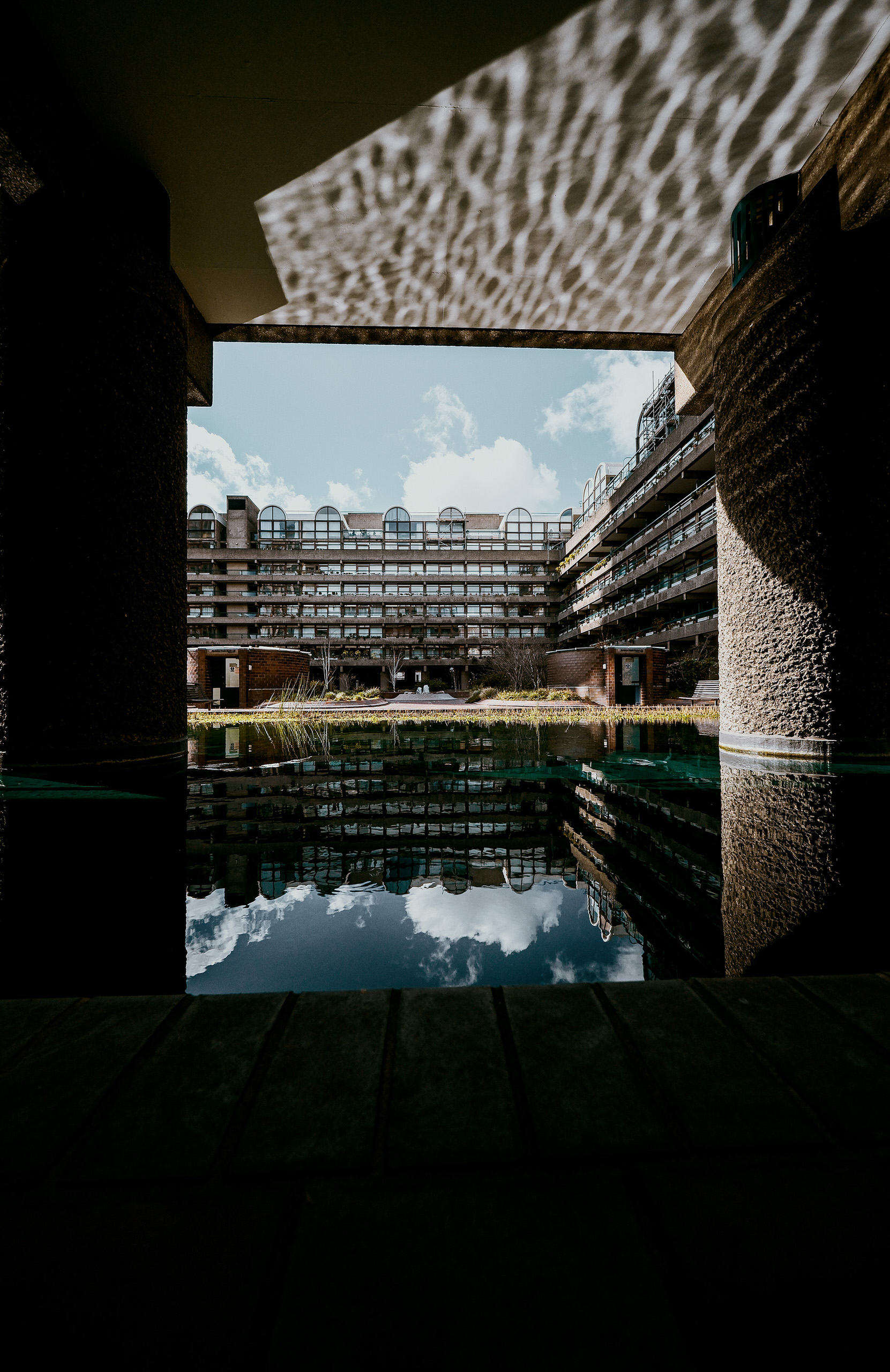Fujifilm Unveils the X-S20 Camera
Fujifilm has launched the X-S20, a far more capable camera than its predecessor, with considerable performance improvements because of a new CPU. The new X-S20 uses the same fourth-generation X-Trans CMOS 4 image sensor as the Fujifilm X-S10, even though Fujifilm has recently released two new fifth-generation X-Trans CMOS image sensors, a 40-megapixel non-stacked sensor, and a 26-megapixel stacked sensor. The native ISO range of the 26-megapixel image sensor is 160-12,800, while the expanded range is 80-51,200.
The Fujifilm X-S20’s performance is significantly enhanced with the addition of the X Processor 5, which was first seen in the X-H2S camera last year. This processor also powers many of the camera’s updates and improvements over its predecessor.
“X-S20 is truly a dream camera for any content creator looking to take their photos and videos creation to the next level, but especially for the ones that are documenting their lives, traveling the world or streaming their stories online,” explains Lisa Baxt, marketing director, Electronic Imaging Division, Fujifilm North America Corporation. “It offers premium image quality and advanced portability, catering to a variety of image creation styles ranging from casual self-portraits to full-fledged photography and videography. With content creators turning to digital cameras more than ever before, we are confident that X-S20 will be well received by users pushing long-form content to platforms, like Twitch, especially since no fees are required to unlock the feature,” continues Baxt.
The X-S20’s buffer allows for more than 1,000 JPEG or compressed RAW photographs when utilizing the mechanical shutter (eight frames per second), significantly improving over the X-S10’s buffer of 105 JPEG frames and 23 compressed RAW frames. The X-S20 provides a 35-frame buffer while taking uncompressed RAW photos, an increase from 18 shots.
The electronic shutter at 20 frames per second performs noticeably better, providing a full-size image file. The X-S20 can capture 256 JPEGs, 79 compressed RAWs, and 28 uncompressed RAWs at this rate. The X-S10 fires 32, 17, and 17 frames at such image settings, respectively.
The enhanced processor also improves the camera’s five-axis in-body image stabilization (IBIS) technology. The X-S20 improves on the X-S10’s promise of up to six stops of shake correction by rating it at an amazing seven stops.
The AI-powered focusing features introduced in the X-H2 series have made their way down to the X-S20. Subject detection autofocus (AF) is a feature found on the X-S20 that is absent from the X-S10.
Automatic detection and tracking of human face/eye, animal, bird, bug, vehicle, bicycle, aircraft, drone, and train subjects are all capabilities of the X-S20. New additions include the insect and drone. The X-S20 also can switch between subjects automatically while it is in “Auto” mode, which may be chosen from the camera’s mode dial. Another new function in “Auto” mode, albeit unrelated to AF, allows the camera to alternate between the well-liked Film Simulations from Fujifilm.
Although it might perform better than its predecessor, the Fujifilm X-S20 has a comparable appearance. The camera has, however, undergone a slight makeover that ought to pay off when employed. In addition to changing the power lever’s form to make it simpler to rotate, Fujifilm has also made various dials and buttons larger, including the top ISO and Q buttons, added a second audio connection, and improved the front grip.
With a larger front grip and a W235 lithium-ion battery with a higher capacity, the X-S10’s battery life is roughly doubled. A new “economy” mode introduced by the X-S20 guarantees up to 800 frames while using the LCD and 750 frames when using the EVF. The X-S10 performed best in “normal” mode, with a maximum frame rate of 325. The X-S20 is capable of 750 frames per second in normal mode while utilizing the LCD or EVF.
The X-S20’s LCD features a 0.62x magnification electronic viewfinder with 2.36 million dots and a 100 frames per second refresh rate. A 3-inch rear display is included with both the X-S10 and X-S20. However, the X-S20’s display contains 1.84 million dots, compared to the X-S10’s 1.04 million dots on the back.
Compared to its predecessor, the X-S20 gains 26 grams (0.92 ounces) in weight and around 1.7 millimeters (0.07 inches) in breadth thanks to the bigger grip. The X-S20 measures 127.7 x 85.1 x 65.4 millimeters (5.03 x 3.35 x 2.57 inches) overall and weighs 491 grams (17.3 ounces) when the battery and memory card are installed.
Here are some sample pictures:
The new Fujifilm X-S20 camera is compatible with the cooling fan accessory (Fujifilm Fan-001) that was unveiled accompanying the X-H2 camera, another difference between the X-S10 and the X-S20. Recording longevity is greatly extended with the $199 add-on. Fujifilm has increased its focus on video. Since the X-S10 hit shops in 2020, the market for content creators has expanded dramatically, and the X-S20 is a response to this growing market segment. The optional cooling fan accessory for the X-S20 further extends the time that may be recorded continuously. 6.2K footage may be recorded at room temperature for over 80 minutes while utilizing the fan. Without the fan, that is more than twice what is feasible.
The X-S20 can internally record 6.2K/30p 4:2:2 10-bit open gate video in addition to DCI4K/60p, 1080/240p, and 1080/60p (Long Play) recording modes thanks to its improved processing capability. The X-S20 can record 12-bit Apple ProRes and Blackmagic RAW footage at 6.2K/30p and 5.2K/30p when externally recording over HDMI.
The F-Log2 feature of the X-S20 guarantees a dynamic range of more than 13 stops. Compared to the F-Log version offered by the X-S10, this is an all-around upgrade.
A brand-new “Vlog” mode is available on the mode dial of the X-S20. Self-timer, face/eye detection, product priority focus mode, IS mode, high-speed recording, and backdrop defocus mode options are just a few of the vlogging-specific features included in this mode in the camera’s touch interface.
While backdrop defocus mode raises the aperture of the linked lens to produce greater background blur, product priority mode prevents face/eye detect autofocus.
The X-S20 also has HVC/UAC support, enabling webcam functionality without needing a specialized program. When users link the camera to their computer, popular video conferencing software recognizes it as a webcam source.
The X-S20’s video features are substantially more advanced than those of the X-S10. New and enhanced performance features include 6.2K resolution, a max bit rate of 360Mbps, almost twice as fast as the X-S10, internal recording in 4:2:2, 12-bit RAW output over HDMI, and F-Log2.
The Fujifilm X-S20 will be available for $1,299.95 on or around June 29th. The X-S20 is exclusively offered in a black finish, unlike some other Fujifilm bodies.
More info on Fujifilm’s website.

